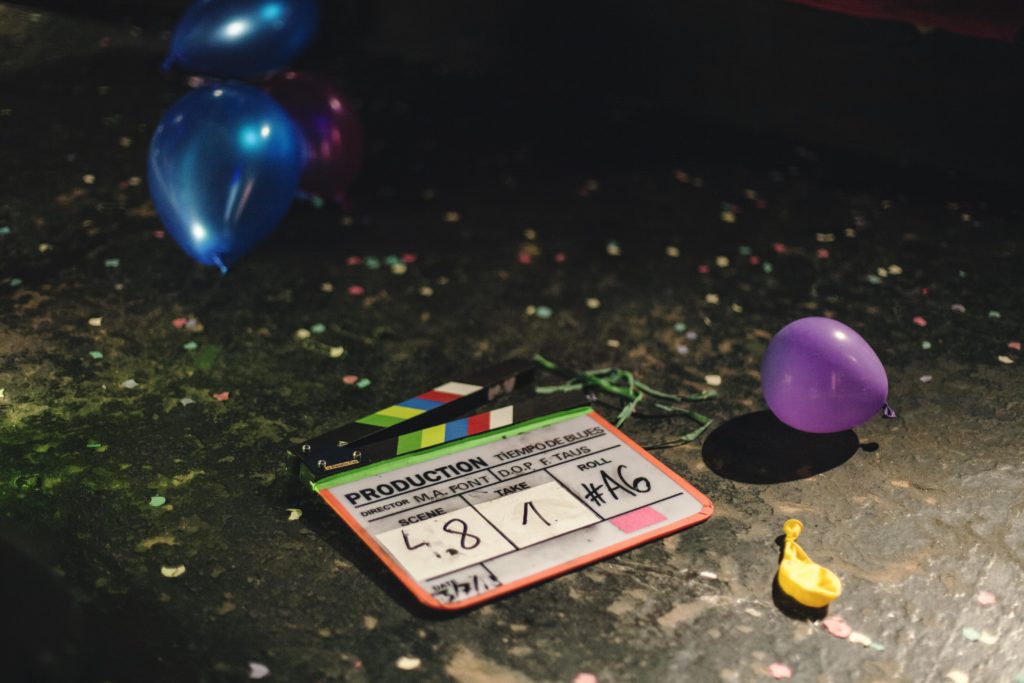7: WHAT IF INCLUSION IMPROVED ART?
The idea of Blues Time came to me in February 2017.
My grandfather was suffering from severe dementia and living with him was emotionally challenging.
I wrote the first draft of the film, but all my energy was focused on XMILE at that time, so I filed it away and moved on for some months. But, after the talk at the Senate, in summer 2017, I was ready to blow off the dust from Blues Time’s draft.
The main reason was not only to share my personal experience about my grandfather’s; I wanted to test the new ways of improving audio-visual accessibility that I had actively been promoting for almost half a year. I needed to be sure that what we had fought for was worth the blood, sweat and tears.
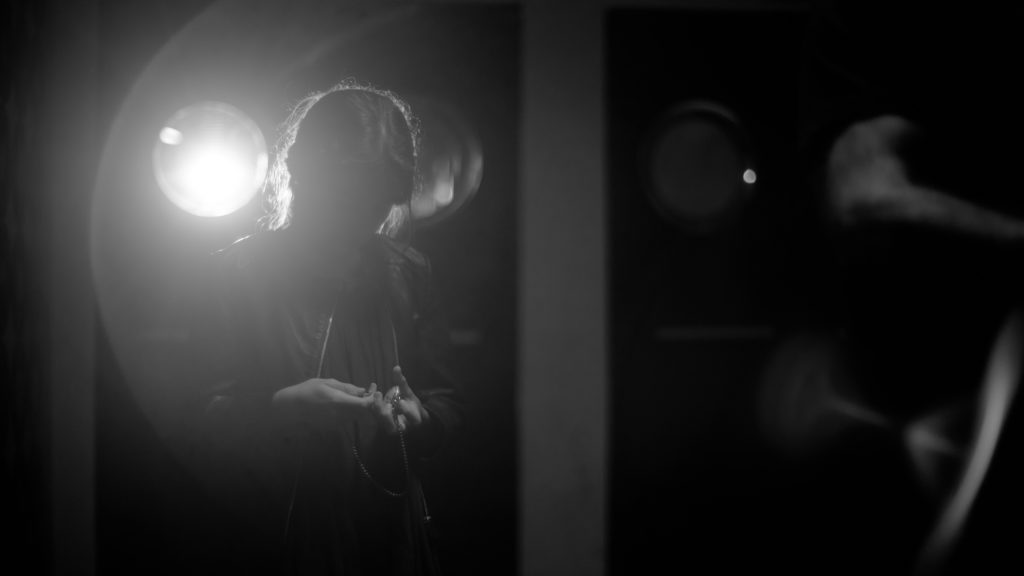
-A COMPLEMENTARY, BUT DIFFERENT PROJECT-
Both projects aspire towards the same ideal regarding accessibility; and the new script, like its predecessor’s, has nothing to do with the theme of disability. While our first film ended up being an accessible, multisensory and adult oriented experience, we subjected Blues Time to inclusive adaptations at every stage of the filmmaking process: From the moment of its conception to its completion. This was not the case with XMILE.
Concurrently, we wanted to use our experience to help any production company to join us in our effort to make inclusive films. To fulfil this task, we crafted a new and easy-to-follow blueprint for creating a workflow – to open the door to fluid collaboration between creators and accessibility companies.
For this reason we skipped the use of the five senses in Blues Time. It would be impossible to turn our multisensory work into a production standard.
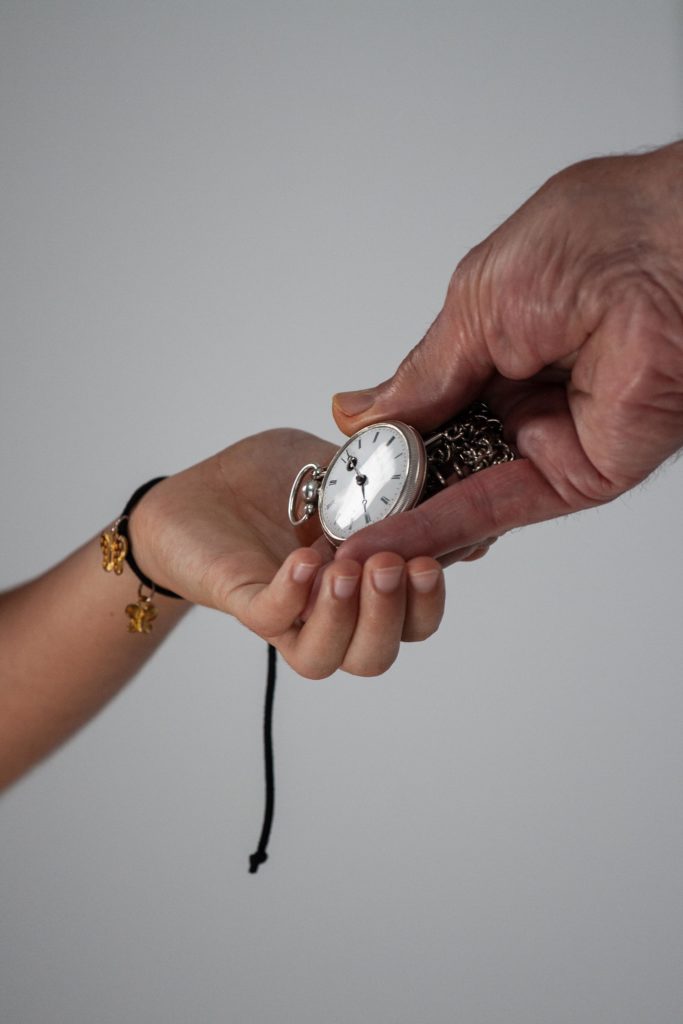
-BLUES TIME-
Here is Blues Time’s plot:
‘Blues Time’ refers to the moments when life seems overwhelming and problems seem to have no solutions. Like a fragile heartbeat ticking to a weird rhythm, it appears as if everything is out of sync.
Fa, an eleven-year-old girl, is going through one of these moments as she runs desperately through the streets of the city, clasping an old pocket-watch, a present from her grandfather. The watch suddenly stops ticking at the exact moment the old man is being taken to the hospital for a serious illness. Still naive, Fa goes on a quest to fix the watch, believing that it will save her grandfather’s life…

Let’s recap for a second.
-THE FIRST INCLUSIVE SHORT-FILM-
Yes, Blues Time is an inclusive short film, because I wrote it knowing I would include the film’s audio description, SDH and the Sign Language version. But inclusion is not limited to taking these tools into account from the start. As discussed before, due to the fact that many people with disabilities wanted to participate in upcoming projects, some of them were invited to join our project.
Through the help of these participants, and thus, some of Blues Time’s future viewers, we could test the film’s accessibility and learn about their suggestions as final consumers of accessibility tools.
They were very helpful to us. Before the shooting, they told us about aspects of audio description or SDH they would like to see improved. We talked about the script of Blues Times as well.
Little by little, I realized that I had found a way to include some particular details in the short film that would improve both the overall experience of the people with disabilities and mainstream audiences.
-CHARACTERS AND SOUND-
For instance, let us have a look at Jay, who besides Fa is the other main character of our story. We had him wearing a key fob. In doing so, it is easier for the blind to know when he is moving on screen.
However, as a result of this decision, the script improved unexpectedly as well. The addition made Jay more believable as a character. Since he is a handyman, the object reinforced that particular characteristic of him.
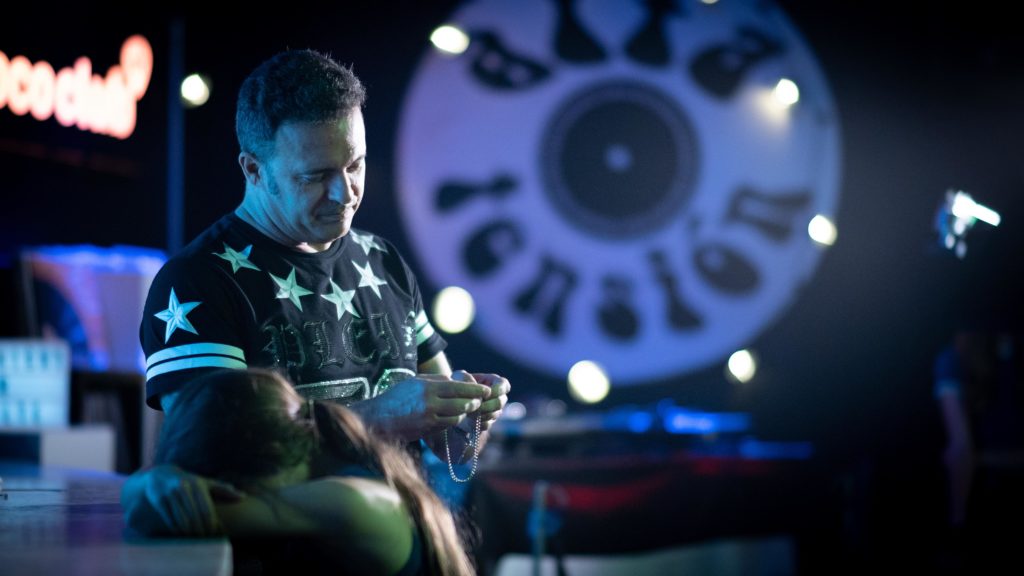
Another example is the vast amount of time we spent on planning the film’s pacing, so the audio description could fit better. By putting into words some of the scenes, the result was sometimes confusing or less investing than expected. That’s how we were able to identify the weaker parts of the film which did not hold well. Consequently, we would rearrange them, or, as in some cases, delete them.
Let us move on to one of the most complex parts of the film: Blues Time features many musical references, and the chords that Jay plays on a guitar work as a pivotal plot device. So, what about the deaf audience?
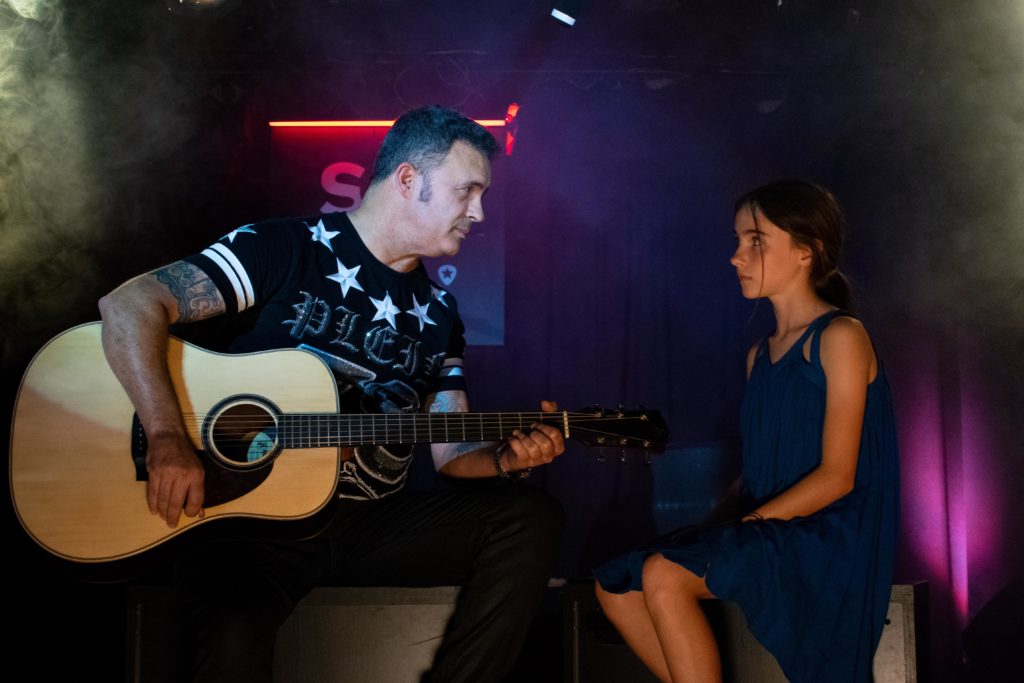
-MUSIC AND ACCESSIBILITY-
The goal was to make this sequence as meaningful as possible for the deaf audience. And the most difficult part was to visually translate what Jay is playing on the guitar.
We started by rewriting some of the dialogues with the help of a deaf psychologist.
Regarding cinematography, we used wider shots when Jay plays major chords. We thought this type of framing would translate the acoustic feeling of happiness and empowerment that major chords transmit. When Jay plays minor chords or even blue ones, we used close-ups with a blurrier background to suggest a more intimate kind of sound.
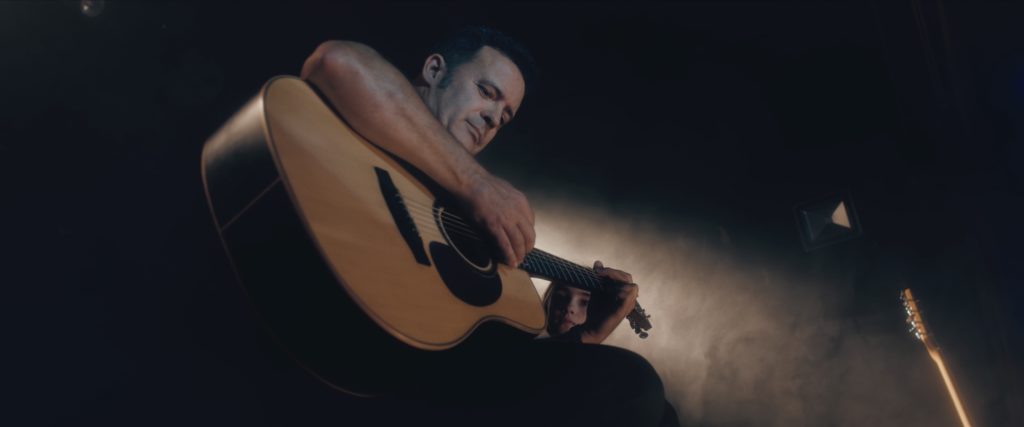
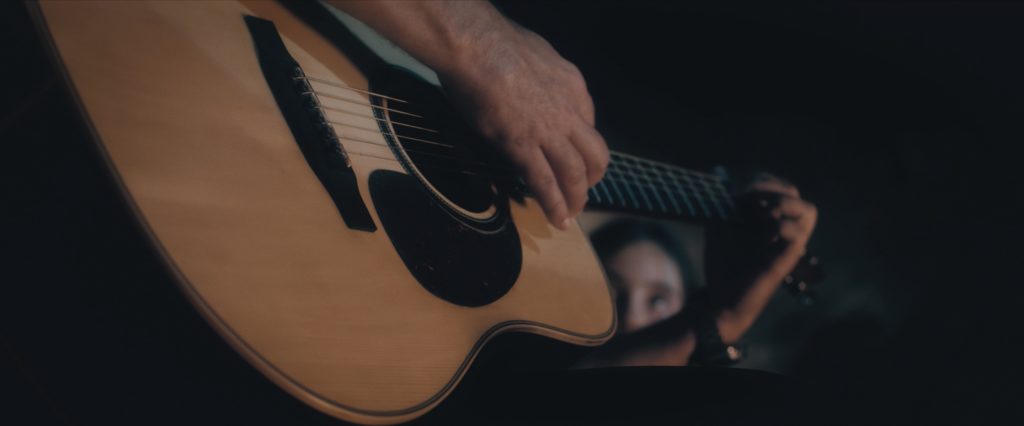
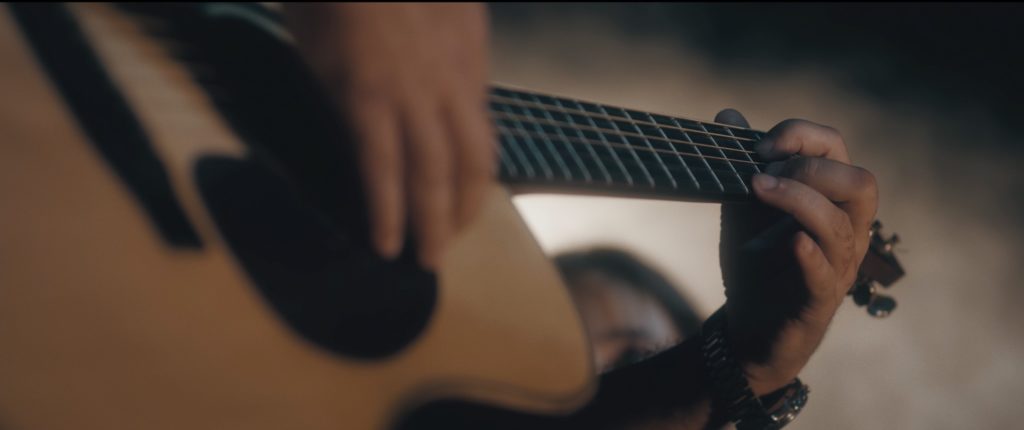
-CHORDS, MEMORIES AND FEELINGS-
We also represented Fa’s memories and feelings by associating each one with a specific chord. These in turn resonate with the atmosphere created by the four seasons.
As a former violinist, I thought this was a nice wink to Antonio Vivaldi’s most famous work.
Happy times captured by major chords take place in spring or summer, minor chords and nostalgic moments are linked to autumn, and moments of anger are represented in a cold winterish blue chord.

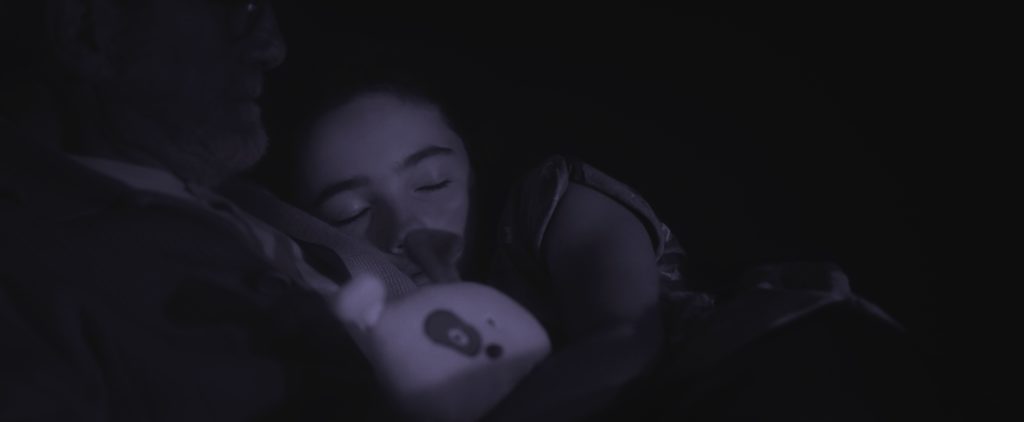

Feelings were translated into colours: Happiness is presented in orange, nostalgia in black and white with a bit of purple and rage in deep red.
To conclude, as you can notice, adding all these layers of meaning considering the impaired audience, strengthened the message and imagery of the film.
Employing these and other likeminded strategies, Blues Time helps viewers to immerse themselves into the film’s particular fairy tale atmosphere. A mysterious, magical and yet realistic tale that proposes the following question to the audience:
Did Jay really exist, or was it all part of Fa’s imagination?
As you may see, attempts at inclusion in cinema does not necessarily lead to betrayal of a work’s artistic merit. In fact, it enhances it for everybody!
